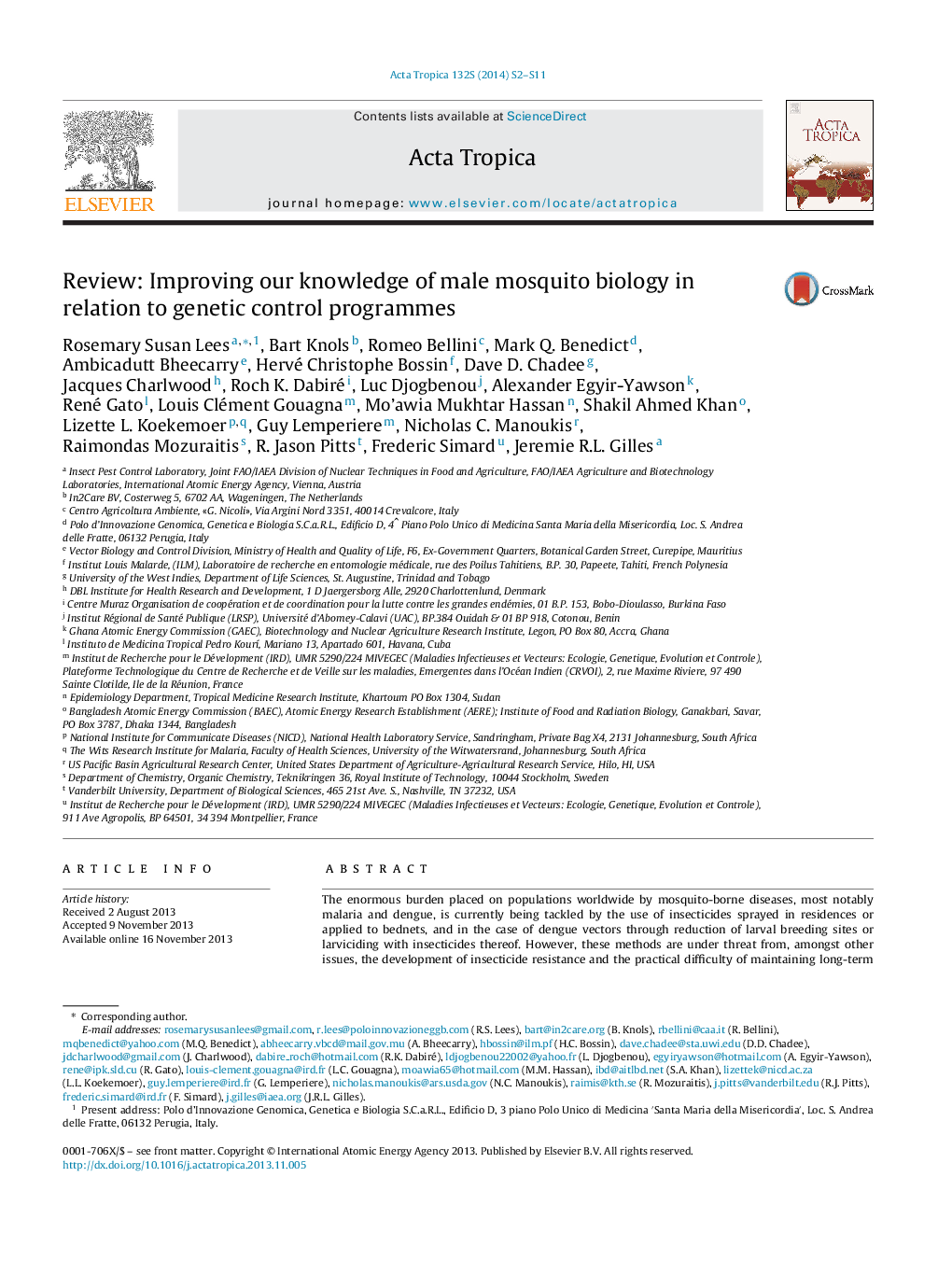| Article ID | Journal | Published Year | Pages | File Type |
|---|---|---|---|---|
| 6127526 | Acta Tropica | 2014 | 10 Pages |
â¢Research focussed on the mating biology and behaviour of male mosquitoes.â¢Rearing conditions and sugar sources contribute to male mating performance.â¢Mating systems, particularly swarm characteristics in Anopheles, were investigated.â¢Molecular and chemical approaches aid understanding of male mating behaviour.
The enormous burden placed on populations worldwide by mosquito-borne diseases, most notably malaria and dengue, is currently being tackled by the use of insecticides sprayed in residences or applied to bednets, and in the case of dengue vectors through reduction of larval breeding sites or larviciding with insecticides thereof. However, these methods are under threat from, amongst other issues, the development of insecticide resistance and the practical difficulty of maintaining long-term community-wide efforts. The sterile insect technique (SIT), whose success hinges on having a good understanding of the biology and behaviour of the male mosquito, is an additional weapon in the limited arsenal against mosquito vectors. The successful production and release of sterile males, which is the mechanism of population suppression by SIT, relies on the release of mass-reared sterile males able to confer sterility in the target population by mating with wild females. A five year Joint FAO/IAEA Coordinated Research Project brought together researchers from around the world to investigate the pre-mating conditions of male mosquitoes (physiology and behaviour, resource acquisition and allocation, and dispersal), the mosquito mating systems and the contribution of molecular or chemical approaches to the understanding of male mosquito mating behaviour. A summary of the existing knowledge and the main novel findings of this group is reviewed here, and further presented in the reviews and research articles that form this Acta Tropica special issue.
Graphical abstractAn FAO/IAEA Coordinated Research Project brought international scientists together to research the mating biology and behaviour of male mosquitoes; the results form the basis of this special issue. A Coordinated Research Project was supported by the FAO/IAEA from 2008 to 2013.Download full-size image
